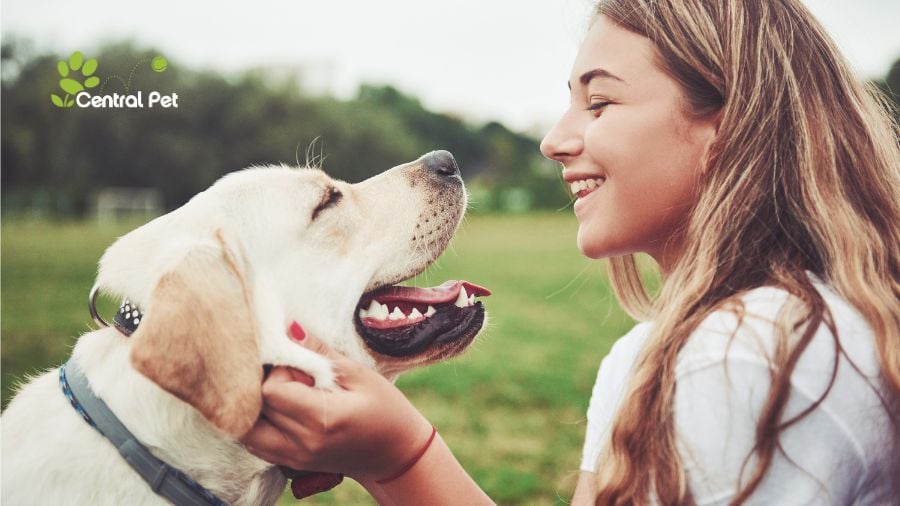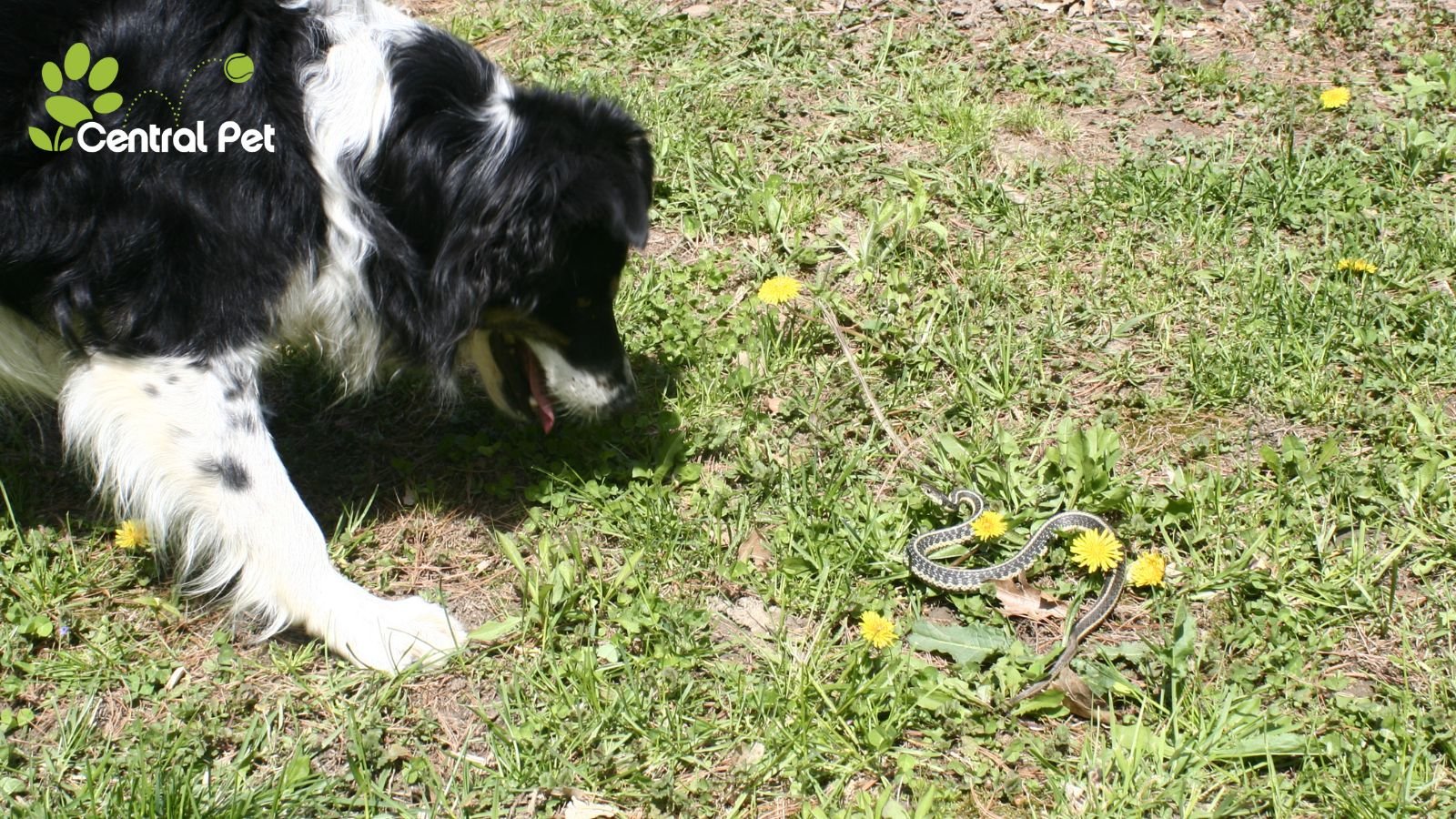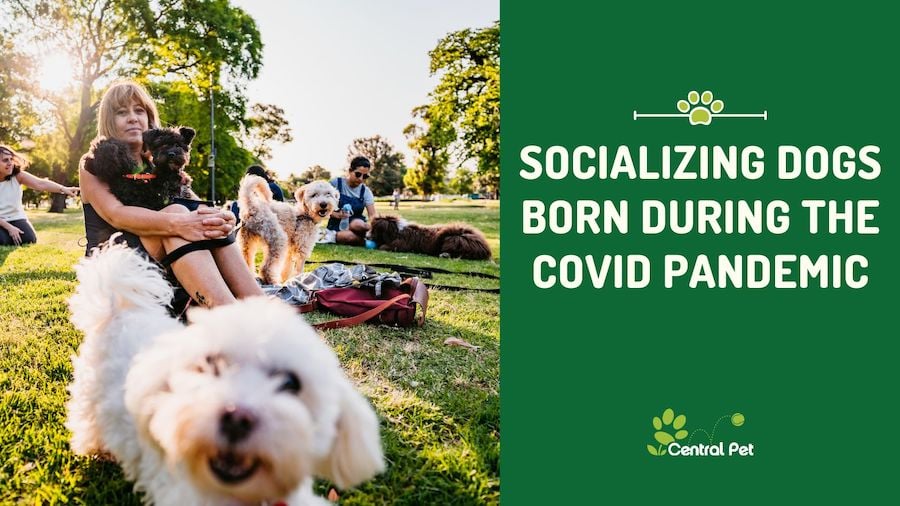Just like people, dogs can also experience anxiety. Sometimes it’s linked to certain situations, sounds, people, other animals, or even your absence. Understanding your dog’s triggers and learning ways to help them overcome these issues will ensure that your furry friend is living his safest and happiest life.
Common Signs of Anxiety in Dogs
Canine anxiety can have many symptoms:
- Hiding, acting scared, trembling
- Pacing, whining, howling, or barking
- Excessive drooling or panting
- Following you from room-to-room
- Scratching or digging at doors and windows to find you
- Even house-trained pets can have accidents when stressed
- Chewing up shoes, furniture, and even drywall
- Getting into the trash
- Desperate and prolonged attempts to escape to find you
Breeds That are Prone to Anxiety
Any dog can experience anxiety. However, there are some breeds that are simply more prone to feeling stress and anxiety. It’s important to know this information so that when you choose your pup, you know which type of training may be needed in the future. Anxiety-prone dog breeds include:
- Cocker Spaniel
- Border Collie
- German Shepherd
- Labrador Retriever
- Basset Hounds
- Shorthair Pointer
- Bichon Frise
- Havanese
It’s also noted that many toy breeds are also prone to anxiety.
Understanding Your Dog’s Anxiety Triggers
Any number of situations can trigger anxiety in a dog, which can sometimes make it a little difficult to narrow down the cause. Your dog’s behavior is part of his panic response. He’s not trying to punish you. He just needs your attention, and he needs to know that everything is okay.
Common Stressful Situations for Pets:
- Being left alone for the first time. A traumatic first-time-alone can trigger the same terror every time he’s left alone.
- Being left alone after constant human contact. This is happening a lot as families go back to the office after the pandemic. Your fur baby wants you back 24/7. When you’re gone eight to ten hours a day, that’s stressful.
- Any change in family routine or structure. A few examples can include bringing a new baby or new pet to the home, the death of a family member, a new dog walker, or moving to a new home.
- A traumatic life before becoming your pet. For pets that were adopted from a shelter, they may have spent a lot of time by themselves, making them crave your constant loving attention now that you’re with them.
- Loud and unexpected noises, such as thunder or sirens.
Strategies to Reduce Doggy Stress
Unfortunately, there is no single remedy for an anxious dog. It’s hard to go through your pet’s anxiety without feeling some of your own! Here are some strategies that may work for you. Every dog is unique, however. So try several methods and let your dog show you what works best for him or her.
Positive Reinforcement
All happy pups require training and conditioning. When dogs perform commands, they should be praised. While dogs that don’t have anxiety may respond to many different types of praise, anxious dogs can be more particular. If you have an anxiety-ridden dog, consider which methods would be best for them. Verbal commands may need to be spoken more softly. For physical touch, you may need to consider moving more slowly or keeping your hands below your dog’s head. Determining the type of positive reinforcement that your dog prefers can pay off in training and help them gain confidence and overcome their fears.
Gradual Separation
It’s common for dogs to feel a little separation anxiety, especially the first few times you leave them alone. If your canine companion is good for a couple of hours without you, try lengthening your time away by 20 minutes every few days. Gradually extend his alone time. If he relapses to bad behavior, reduce the time you’re away until trust is re-established. This takes time but will reassure your four-legged pal that you WILL return eventually.
Normalize Your Arrivals and Departures
It may be hard, but ignore your dog for a few minutes when you come home. Do something else for a few minutes and then calmly pet him and give him attention. When leaving, keep it low-key with a pat and quick departure.
Try to Stick to a Schedule
Maintaining a routine can help your dog understand what is happening and help them cope with their day. Try to stick to the same general timeline and order of your day. The morning routine can help start the day off right and allow your animal to trust in its surroundings. If you wake up, consider letting your dog go straight outside to use the bathroom, followed by feeding. Many owners find that reducing variability in their schedules can help to reduce anxious behavior in their pets.
Create a Safe Space
Creating a safe place limits his ability to be destructive while you’re away. It can be a crate or a closed room with a window and toys. Leave him something that smells like you in his bed or crate.
Crate training can provide the safe place he needs to feel calm enough to settle down while you’re away. Start with a few minutes alone in the crate and work up to time away from him in a different room. A dog who is crated a large part of the day must have active outdoor time (30 – 60 minutes daily) and your attention when you come home.
Related Read: The Advantages of Crate Training Your Dog
If you’re not sure how to crate-train your dog, we can help. Central Pet offers training classes for dog owners in the Tucson area who would like help with teaching basic manners amongst people and other dogs, as well as help with crate training in a way that isn’t traumatic for the dog.
Hire a Dog Walker
A dog walker can provide the necessary bathroom breaks every four to six hours and give your pup some human interaction.
Use Doggy Daycare
This option is worth the expense because a tired dog is happier and more relaxed. Dogs that get plenty of exercise and socialization with other dogs are a happy addition to the family. Exercise helps your dog stay healthy and have good digestion. It burns calories and provides mental stimulation – a bored dog can be very destructive.
Things You Should Avoid When Trying to Reduce Dog Anxiety
Just as there are many things that will work for your pup, there are also some things you should avoid.
- Punishment is not effective in treating anxiety. It can make the situation worse.
- Getting another dog or other pet rarely helps. Their anxiety is caused by not being with you, not by being lonely.
- Leaving a TV or radio on when you leave only works if he or she has been trained that it is a safety cue that guarantees your eventual return.
- If crating works for your dog, use it. Some dogs may feel that a crate provides safety and protection. Unfortunately, other dogs, particularly those who spent time in a shelter, may experience more anxiety when placed in a crate. For these dogs, there’s a danger they will howl or injure themselves trying to escape. A small room may be a better solution for these pets.
How We Can Help Your Dog to Reduce Anxiety
It can be hard to train your pet to have less anxiety. Our staff is passionate about helping dogs feel more comfortable in their own skins. We offer training to help owners and dogs with managing situations to reduce stress. And we have daycare services available in the Tucson and Amado areas for dogs who might not be showing improvements in their anxious behaviors.
Learn more about training and doggy daycare at Central Pet.






